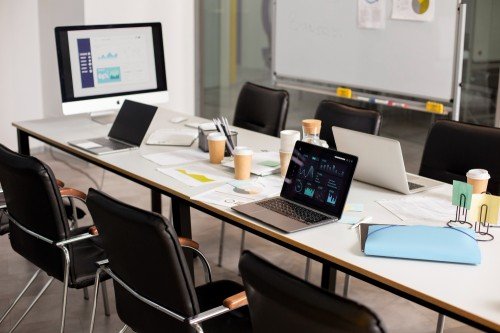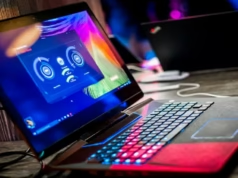In the ever-changing landscape of workplace design, few elements have undergone as dramatic a transformation as cubicles. From their inception in the mid-20th century to the sophisticated modular systems of today, cubicles have evolved to meet the dynamic needs of businesses and employees alike. Understanding the journey of cubicles can help organizations design more effective, comfortable, and collaborative work environments.
The Birth of Cubicles: A Revolutionary Idea
The concept of cubicles was introduced in the 1960s by Robert Propst, an inventor working for Herman Miller. Originally dubbed the “Action Office,” Propst envisioned a workspace that would boost productivity and privacy while accommodating human behavior and organizational flexibility.
These early cubicles were designed with mobility and ergonomic efficiency in mind. However, the idea was quickly commercialized into cost-cutting, uniform partitions that prioritized density over employee wellbeing. What was meant to be a revolutionary idea turned into the stereotype of the drab, isolating cubicle farm.
Cubicles in the 1980s and 1990s: The Era of Standardization
During the 1980s and 1990s, cubicles became the staple of corporate America. They were praised for their cost-effectiveness, ease of installation, and ability to house growing numbers of employees in limited office space. Companies used them to define personal work zones, reduce distractions, and enforce a structured workflow.
Despite these practical advantages, cubicles of this era were often criticized for being impersonal and monotonous. Grey panels, fluorescent lighting, and minimal personalization contributed to the negative image associated with cubicles. This era gave rise to the term “cubicle culture,” often used derogatorily to describe the lifeless corporate environment.
The Backlash and Rise of Open Offices
The turn of the millennium brought a shift in office design philosophy. Startups and tech companies led a movement away from traditional cubicles, favoring open-plan offices that emphasized collaboration, transparency, and creativity. Large tables replaced partitions, and the idea of removing barriers became symbolic of a new, agile work culture.
While open offices promoted team communication, they also introduced new challenges: noise, distractions, and a lack of privacy. Over time, many businesses began to recognize that one-size-fits-all office plans didn’t serve all employees or tasks equally.
The Modern Rebirth of Cubicles: Function Meets Flexibility
Today, cubicles have undergone a renaissance. Far from their dull, uniform predecessors, modern cubicles are highly customizable, tech-integrated, and design-forward. Businesses now seek a balance between openness and privacy, leading to hybrid layouts that incorporate modular cubicle systems with shared collaborative zones.
Modern cubicles are built with materials that absorb sound, include ergonomic furniture, and can be adjusted to fit individual preferences. Companies are investing in smart cubicle systems equipped with built-in power outlets, adjustable sit-stand desks, ambient lighting, and even air purifiers. These innovations have transformed the cubicle from a symbol of isolation into a centerpiece of productive, employee-centric workspace design.
Why Businesses Are Reembracing Cubicles
1. Enhanced Focus and Productivity
One of the primary reasons businesses are returning to cubicles is the improved focus they offer. Employees working in cubicles experience fewer distractions compared to those in open-plan offices. By providing visual and acoustic privacy, cubicles allow employees to concentrate better, especially on tasks that require deep thinking.
2. Customization for Team and Role Needs
Modern cubicle systems are highly modular. Teams that require more collaboration can have lower partitions and shared spaces, while employees in need of quiet zones—such as developers or writers—can benefit from enclosed cubicles. This customization helps support different work styles and job functions under one roof.
3. Health and Safety Considerations
Post-pandemic, many companies have reconsidered their office layouts for better hygiene and physical distancing. Cubicles offer natural barriers between employees, reducing the spread of airborne illnesses. They also create a sense of personal space, which many workers now value more than ever.
4. Branding and Aesthetics
With advances in design, cubicles no longer have to be bland or generic. They can reflect a company’s brand identity through colors, materials, and layout. Whether your brand is sleek and modern or warm and creative, cubicle designs can now be tailored to align with your company culture.
Cubicles and Employee Wellbeing
Today’s workforce prioritizes comfort, mental wellness, and flexibility. Modern cubicles address these concerns by incorporating ergonomic solutions and personal space customization. Sit-stand desks, lumbar-support chairs, adjustable lighting, and sound-masking panels all contribute to a healthier and happier workspace.
Some companies also encourage personalization of cubicle spaces, allowing employees to add plants, artwork, or personal items. This small touch of ownership can increase job satisfaction and a sense of belonging.
Tech Integration in Cubicle Design
Today’s cubicles are built with technology in mind. Cable management systems, wireless charging stations, and integrated data ports are now standard features. Some systems even include smart sensors that monitor lighting and temperature preferences.
This tech-forward approach not only streamlines daily tasks but also future-proofs the workplace by allowing upgrades and reconfigurations without major disruptions.
Sustainability in Cubicle Construction
Sustainability is becoming a key factor in office design. Many cubicle manufacturers are now using recycled materials, non-toxic finishes, and modular designs that reduce waste. Eco-conscious companies can select cubicle systems that align with their environmental goals, contributing to LEED certifications and greener operations.
The Future of Cubicles
As remote work and hybrid office models continue to shape the workplace, cubicles will likely become more adaptive. We can expect future systems to include more smart features like occupancy sensors, AI-driven climate controls, and dynamic reconfiguration options. Virtual collaboration tools will also become more seamlessly integrated into physical cubicle spaces.
The emphasis will remain on flexibility—giving employees control over how they work while still providing structure and privacy when needed.
Conclusion
The evolution of cubicles reflects the broader trends in workplace design—from rigid uniformity to flexible, human-centered environments. Far from being outdated, cubicles have proven to be one of the most adaptive and practical elements of the modern office.
As businesses seek to balance collaboration with individual productivity, privacy with openness, and aesthetics with function, cubicles remain an essential part of the conversation. Investing in well-designed, tech-integrated, and customizable cubicle solutions can not only enhance employee comfort and productivity but also future-proof your workspace for years to come.





